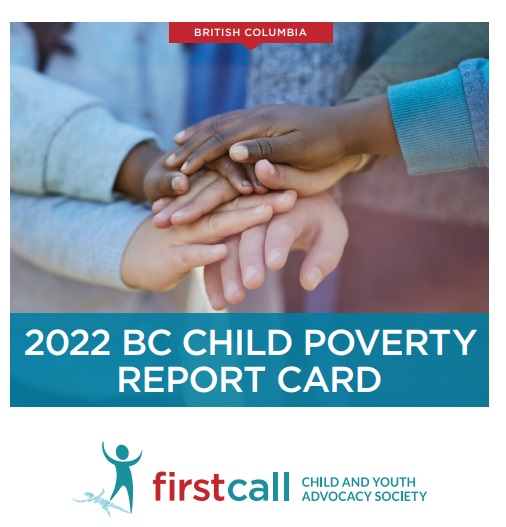THE First Call Child and Youth Advocacy Society on Tuesday released the 26th annual BC Child Poverty Report Card finding that BC’s child poverty rate dropped significantly largely due to the enhanced income supports families with children received during the first year of the COVID-19 pandemic.
In 2020, the year this report covers, 13.3% of BC children and youth (0-17), or 116,500 kids, were living in poor households, down from 18% in 2019.
“While the overall child poverty rate in 2020 was reduced thanks to the additional government benefits, the data continues to highlight long-standing inequities between groups with higher risks of poverty and the overall child population,” said Adrienne Montani, First Call’s Executive Director. “Children in lone-parent families, Indigenous children, new immigrant children and children in several racialized groups still have higher poverty rates.”
Some of the 2020 findings include:
- The poverty rate for BC children in lone-parent families overall was 38.%, down from 49% in 2019, but still very high. Eighty percent of lone parents in BC were women in 2020.
- BC’s early years (0-5 years old) child poverty rate, at 13%, was lower than Canada’s at 14.2%.
- The average child poverty rate on 59 BC First Nations reserves in 2020 was 29.2%.
- Many of the regional districts with the highest child poverty rates were located in coastal areas, particularly along the north and central coast, with rates as high as 20-26%.
- 10% of BC’s richest families with children have nearly as much of the income pie as the combined incomes of the lowest income 50% of families with children.
- 153,630 BC children were kept out of poverty thanks to government help in 2020.
- 94% of BC families with children received some sort of government pandemic benefit in 2020.
The report contains 25 child poverty reduction recommendations for the provincial and federal governments in the areas of tax fairness and income support, targeting initiatives for groups with higher child poverty risks, and investing in lowering barriers and improving lives through robust universal programs.
Some of the provincial recommendations include indexing the BC Child Opportunity Benefit to inflation to ensure the value of the benefit does not erode over time, continuing to prioritize new child care investments, raising social assistance rates and automatically enrolling all young people transitioning out of care in an income support program that meets their basic living costs and ensures they have safe, secure and affordable housing.
First Call Child and Youth Advocacy Society works with a non-partisan, cross-sectoral network of affiliate organizations to put BC children and youth first in public awareness and public policy. It conducts research and analysis on child and youth rights and well-being, offer education and training events, and make policy recommendations to promote, strengthen and defend the rights of children and youth in BC.
The 2022 BC Child Poverty Report Card, maps and other materials: https://firstcallbc.org/bc-child-poverty-report-card/












